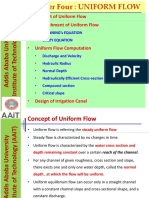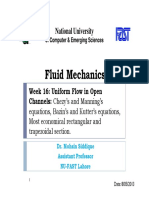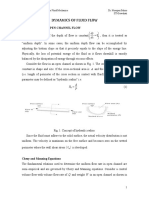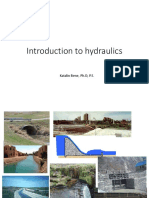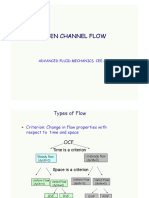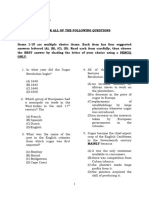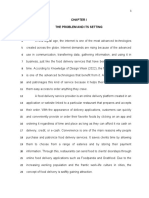0% found this document useful (0 votes)
72 views21 pagesExperiment 5 Uniform Flow
This document describes an experiment to determine uniform open channel flow properties using a laboratory flume. It involves measuring flow depth, time, slope and calculating discharge, velocity and roughness coefficients using Manning's and Chezy's equations. Graphs of velocity vs hydraulic parameters will be plotted and Manning's n determined from the slope.
Uploaded by
Abu Al RubCopyright
© © All Rights Reserved
We take content rights seriously. If you suspect this is your content, claim it here.
Available Formats
Download as PDF, TXT or read online on Scribd
0% found this document useful (0 votes)
72 views21 pagesExperiment 5 Uniform Flow
This document describes an experiment to determine uniform open channel flow properties using a laboratory flume. It involves measuring flow depth, time, slope and calculating discharge, velocity and roughness coefficients using Manning's and Chezy's equations. Graphs of velocity vs hydraulic parameters will be plotted and Manning's n determined from the slope.
Uploaded by
Abu Al RubCopyright
© © All Rights Reserved
We take content rights seriously. If you suspect this is your content, claim it here.
Available Formats
Download as PDF, TXT or read online on Scribd
/ 21
















